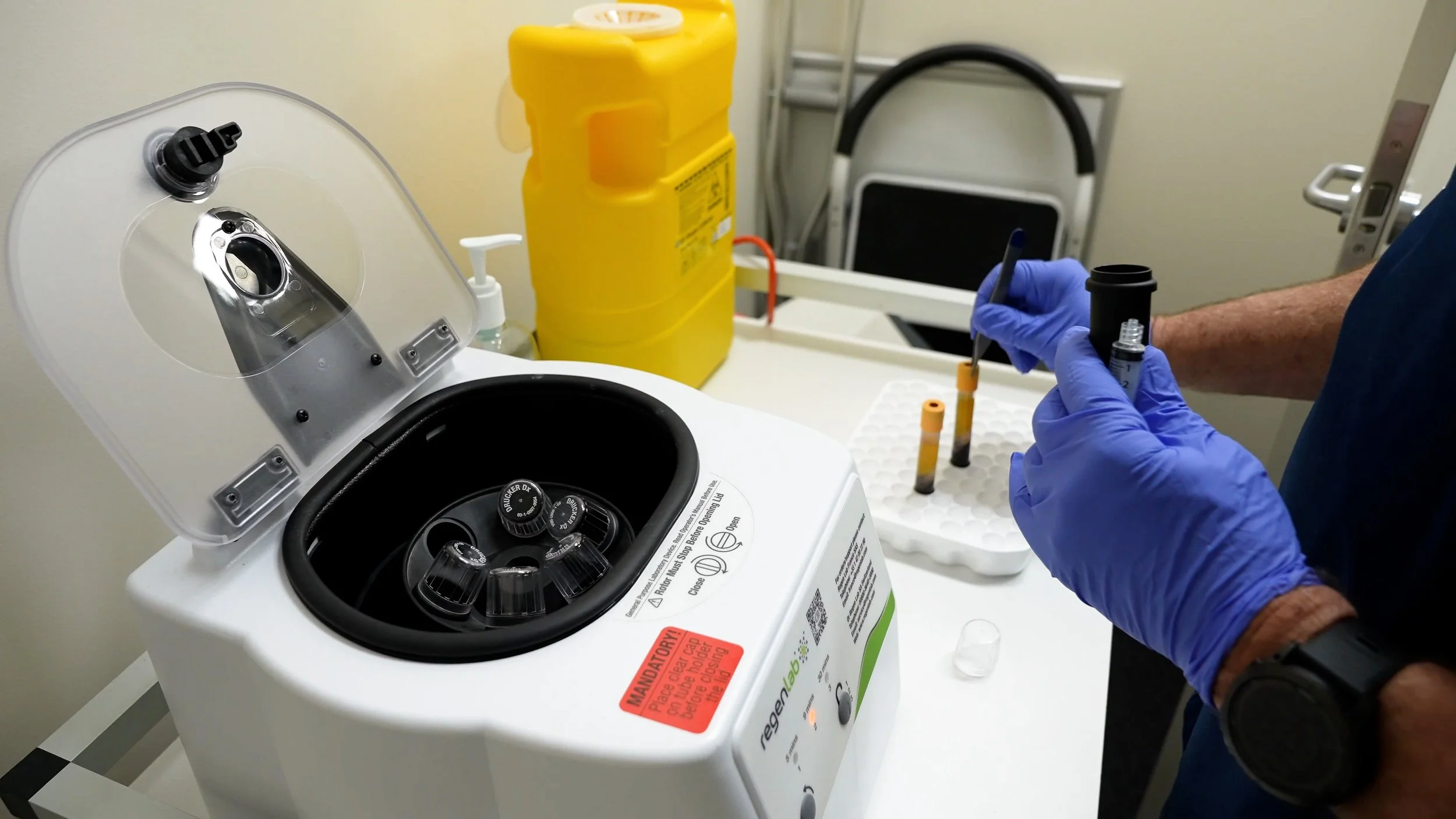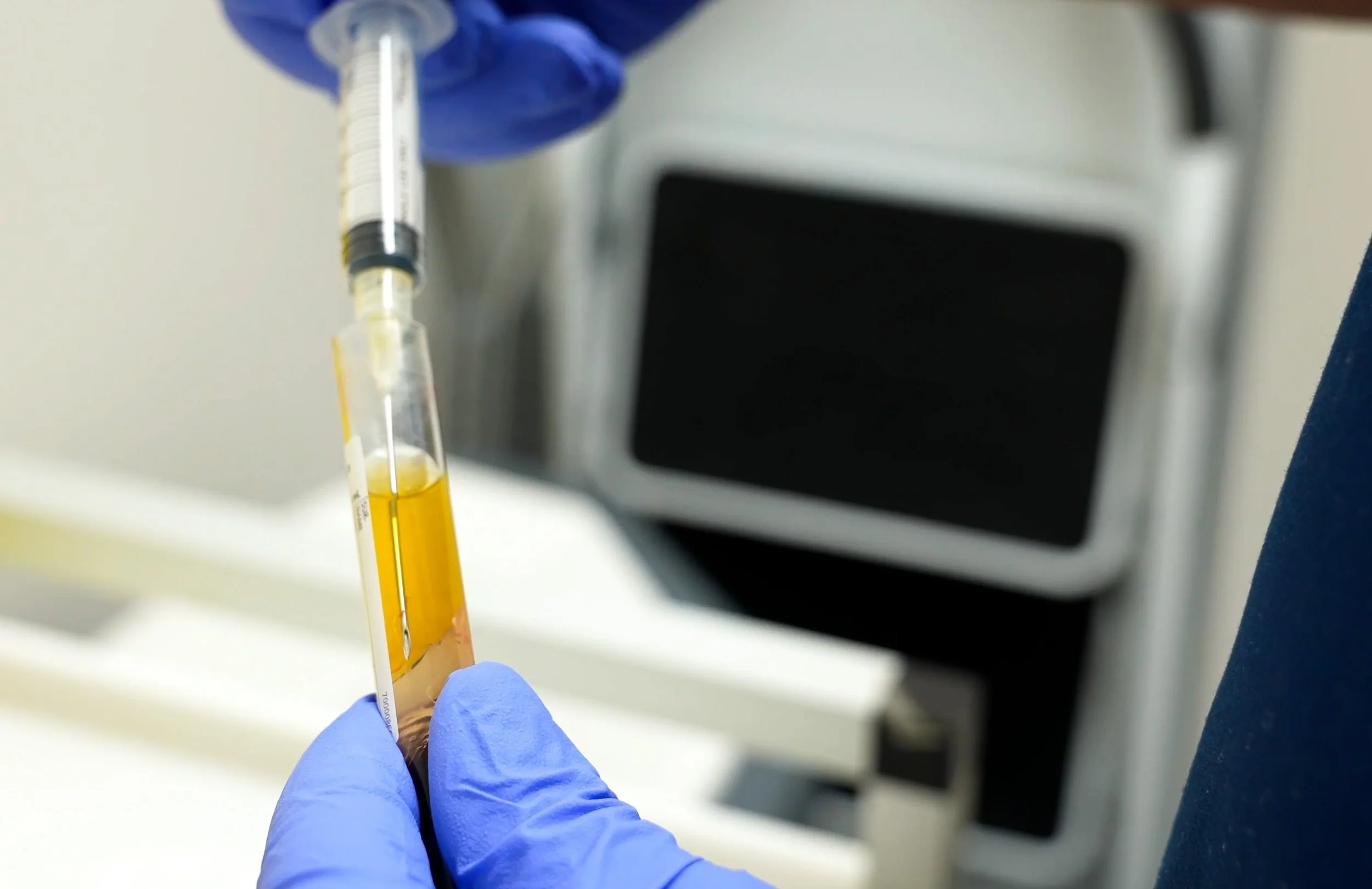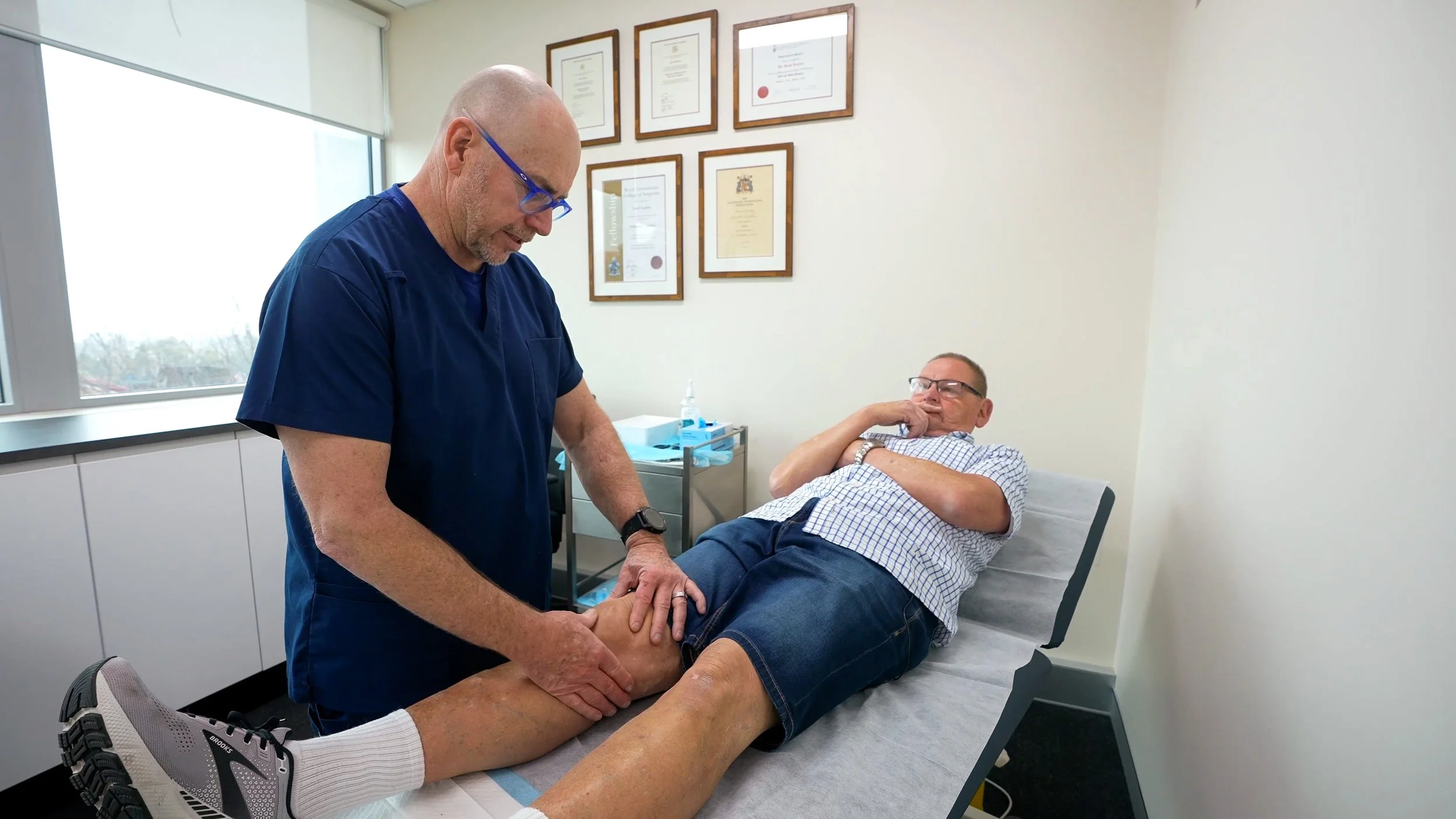
Platelet-Rich Plasma
The human body has a pretty remarkable ability to heal itself. Platelets, which make up less than 1% of your blood, contain healing proteins for tendon and muscle injuries.
Platelet-Rich Plasma (PRP) therapy is a relatively modern technique which can significantly accelerate recovery times for many such injuries and conditions by injecting a concentrated portion of your own blood directly into the site of the injury.
The process
If your injury is suitable for this treatment we will draw a small amount of your blood (equivalent to a blood test sample).
Your blood is left to coagulate for ten minutes. It is then placed in a centrifuge to separate the red blood cells, and platelet-enriched plasma.
The platelets (the lighter-coloured fluid in this photo) can then be drawn off.
Using an ultrasound to precisely target the injured area, the platelet-rich plasma is injected into the injured area.
Potential Outcomes
PRP enhances the natural healing process by increasing cell proliferation, collagen production, and blood flow, thereby accelerating recovery.
This targeted approach can reduce inflammation, decrease pain, and improve functional outcomes, making it an effective treatment option for chronic or acute soft tissue injuries.
Unlike some other treatments, such as taking anti-inflammatories, PRP actually promotes healing.
Not every injury or patient is suitable for the treatment, but for those that are the outcomes can be tremendous.
For patients with arthritis and tendinopathies it can mean the difference between being able to undertake exercise-based therapies or not.
For athletic types – be they elite sportspeople or weekend warriors – it can turn a projected three-month recovery into a six-week one.
Treatment Schedule
Typically PRP patients will require three treatments. One on the first visit, another about two weeks later, and the final treatment about two weeks after that.
The specific treatment schedule will be determined at the first consultation, and this will be communicated clearly with the patient and any referring specialists, GPs and physiotherapists to ensure your recovery process is as effective as possible.





